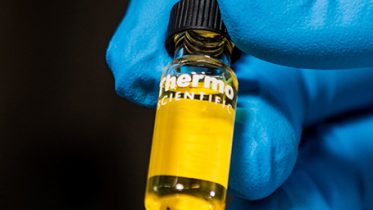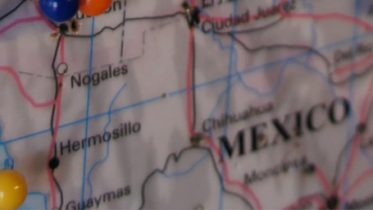USMCA and Mexico’s new IP Law: implications for the pharmaceutical industry
- 13 August 2020
2020 has been a year of rapid and dramatic changes. For intellectual property, this is no exception. Major changes in Mexico’s IP landscape have occurred this year: the United States-Mexico-Canada Agreement (USMCA) entered into force on July 1, 2020, and triggered the enactment of a new IP Law, the Federal Law on Protection of Industrial Property (LFPIP), that enters into force on November 5, 2020.
The LFPIP is consistent with the country’s trend of heightening the bar when it comes to IP protection. It responds to the need of complying with obligations from the above-mentioned trade agreement and formalizing long-standing practices of the Mexican Institute of Industrial Property (MIIP).
Since many of the changes directly impact the patentability and enforcement of pharmaceutical inventions, we have committed to identify and discuss what should not be overlooked by the pharmaceutical industry: patentability of medical uses, Bolar exception, patent term extension, and data exclusivity.
New uses of known compounds
Patentability of new uses of known compounds has always been contentious. Together with patents covering new formulations and productions methods, medical use patents are criticized as being a form of “evergreening”, with undesirable effects for public health and economy, especially in developing countries.
The MIIP has granted patents to new uses of known compounds for several years, despite not being bound by law or court resolutions. For this reason, the debate on the actual legal grounds for patenting medical uses was ongoing. Indeed, it was not uncommon to question the eligibility of medical use patents in invalidity proceedings.
The legal aspect of the debate is now over, as the FLPIP explicitly acknowledges the patentability of a known “substance, compound or composition, as long as its use is new”. This provides unambiguous support for the range of currently accepted medical use inventions: second medical uses; new methods, times, frequencies, or dosages of administration; new patient groups; and new uses of known compounds in association with another agent.
The MIIP’s practice has thus been formalized, leaving no room for doubt regarding the eligibility of said inventions in Mexico.
Bolar exception
Bolar exceptions around the world typically cover acts associated with obtaining information for a sanitary registration that would otherwise infringe a patent, such as manufacturing, importing, or using a protected product, so as to avoid de facto extensions of the patent exclusivity.
The FLPIP incorporates a brand-new Bolar exception, specifically directed to using, producing, offering for sale, and importing a patented product, for the sole purpose of “producing tests, information, and experimental production necessary for obtaining a sanitary registration of medicaments for human health”. The wording has been directly adopted from the USMCA, which requires the parties to have said exception.
The provision is rather clear in that veterinary and agrochemical products are not benefited. Also, acts by third party suppliers could hardly fit in the exclusion, and, in contrast with other Latin American countries, such as Brazil and Chile, exporting is not covered.
Previously, it was rather unclear whether producing, importing or using a pharmaceutical product was covered by the generic experimental use exception, as such exception was restricted to acts having non-commercial purposes. This uncertainty is now gone.
A big hurdle at the regulatory level remains: the current sanitary regulations allow the filing of sanitary registrations within three years before patent expiry for generics, and within eight years before patent expiry for biosimilars; contrario sensu, filing beforehand is not allowed. Paradoxically, the mere filing or approval of sanitary registrations is not an act of infringement per se, so, in view of the new Bolar exception, there could be no reason to restrict the timeframe for such activities. It remains to be seen if and how the sanitary regulations will be adjusted in view of these legislative changes.
Patent term extension
The USMCA included two mechanisms for patent term adjustment that apply to pharmaceutical patents, so, even though, strictly speaking, patents are still unextendible, pharmaceuticals could enjoy a longer exclusivity.
The first mechanism is an adjustment due to unreasonable delays from the MIIP, applicable to patents from all fields of technology, implemented in the FLPIP as a “Complementary Protection Certificate” (CPC). An unreasonable delay exists when the application processing exceeds five years, excluding, inter alia, periods of time not attributable to the MIIP. Average prosecution timeframes rarely exceed 4 years, but the availability of CPCs is nevertheless good news for those applications having unusually long processing times.
The second mechanism applies to pharmaceutical patents only and consists of a compensation for unreasonable curtailment as a result of the marketing approval process. It has not been established in national law, as a transition period of 4.5 years applies in this case. Due to the novelty of the measure and the interests at stake, national implementation is unlikely to occur in the short term.
Patent linkage
Mexican law provides a linkage system to prevent the regulatory approval of products covered by a patent, without the patent holder’s consent. The system is, however, too rigid, and full of legal uncertainty for all parties involved.
One area of concern is the lack of notice to the patent holder whenever a sanitary registration was requested by a third party. With the USMCA, Mexico’s authorities now have the obligation to notify patent holders and provide them with a reasonable opportunity to present facts and arguments regarding a third-party request for sanitary registration. This provides innovator pharmaceutical companies with increased opportunities to identify and hinder potential generic competitors.
Unfortunately, although updating the corresponding regulations is urgent, there has not been relevant legislative activity in this regard so far. Until then, enforcing the above obligation will remain difficult.
Data exclusivity
The extent of protection of test data for pharmaceuticals has also suffered changes in view of the USMCA.
Specifically, the scope has been clarified so that exclusivity prevents unauthorized third parties from obtaining approval for the same or similar product based on i) undisclosed information regarding safety and efficacy of a new pharmaceutical product, ii) the marketing approval granted to the person that submitted said undisclosed information, or iii) evidence of prior marketing approval of the product in another territory. Further, the current five-year period applicable to new pharmaceutical products will also apply to combinations comprising a new chemical entity.
One may wonder if the USMCA’s test data protection applies for biologics. The answer lies in the definition of “new pharmaceutical product”: one that does not contain a chemical entity that has been previously approved. In as far as biologics are chemical entities of biologic origin, but chemical entities nevertheless, they are eligible for the 5-year protection.
No laws regarding data exclusivity have been enacted despite the existence of a corresponding obligation in the USMCA’s predecessor, the North America Free Trade Agreement (NAFTA). Indeed, demanding recognition of test data protection would require directly applying the trade agreement in absence of national laws. Hopefully, this time, the necessary legislative measures will be taken before the applicable five-year transition period ends.
A further obstacle may be present in the case of biologics. Mexican health authorities have refused to grant exclusivity to biologic products, interpreting NAFTA’s analogue obligation of protecting products that utilize new “chemical entities”, as being restricted to products that utilize “new entities of chemical origin”. The courts have reached to a different conclusion, instructing the Health authority to protect biologics when applicants appeal. Unfortunately, because the USMCA uses the same language as the NAFTA, it does not solve the controversy so litigation will likely be needed in the future as well.









